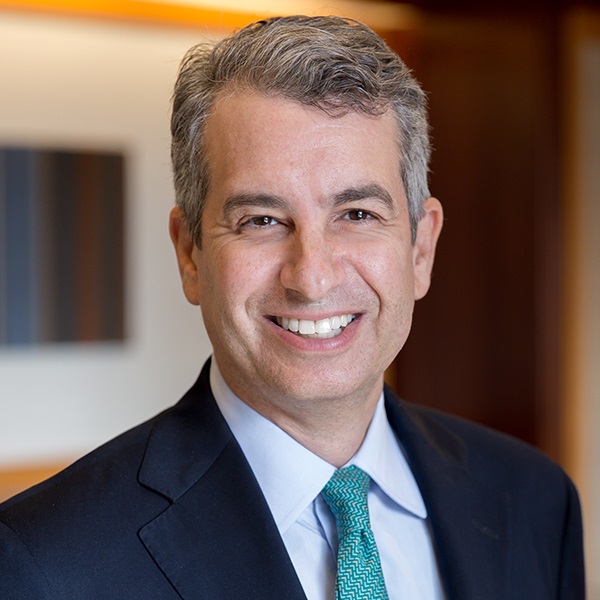Chart in Focus
International
The past year has reminded me that predictions based on macroeconomic events can be unreliable guides to the future.
A year ago, if I told you that the war in Ukraine would continue to drag on, that the European economy would produce virtually zero growth and that U.S.-China tensions would intensify, I doubt you would have expected a positive return for international stocks. And yet, despite the escalating war in Ukraine, skyrocketing energy prices, record high inflation and weak economic growth, European markets have staged a powerful rally, outpacing U.S. stocks over the past two quarters.
Even with the benefit of perfect hindsight, or a crystal ball, you might still have come to the wrong conclusion. Knowing all the macroeconomic facts in advance, we would have predicted negative returns. The headlines would have misled us.
European markets have far outpaced U.S. markets in recent months

Sources: Capital Group, MSCI, Standard & Poor’s. Figures reflect the difference in total return on a year-over-year local currency basis between the MSCI Europe Index and the S&P 500 Index. As of March 31, 2023.
So why did it happen? Why did European stocks, as well as the broader universe of international stocks, do so much better than U.S. stocks? In my 29 years as a portfolio manager — and 15 years on EuroPacific Growth Fund® — all I can say is, markets sometimes give you a hint that something important is going on. I think this activity in international markets is something we need to watch closely.
Why have stocks outside the U.S. had better returns?
There’s no question that valuations are generally still more attractive outside the U.S. That’s been true for a long time, but nobody has cared because it hasn’t made any difference in recent years. However, when it comes to individual companies, we may be getting some hints as to why international markets are perking up.
Take a company like Holcim, a Switzerland-based cement maker. While there is no good news anywhere to be found in the building materials sector, Holcim trades at a 10% free cash flow yield — a financial metric that compares the company’s free cash flow per share to its market value per share — and the company is growing not shrinking. Sometimes that’s good enough.
Then there’s Shin-Etsu Chemical, Japan’s largest chemical company. It has various business lines tied to housing, agriculture and semiconductors, among other areas. Shin-Etsu has a strong balance sheet, low debt levels and, like Holcim, the business is growing. Shin-Etsu trades at a price-to-earnings (P/E) ratio around 13, and Holcim carries a P/E of 11. (The P/E ratio compares a company’s share price to its net profits). These are very low valuations, compared to similar multinational companies. Maybe these low valuations, combined with earnings news that isn’t terrible, are carrying the day.
Many non-U.S. companies trade at a discount to their U.S. counterparts

Sources: IBES (Institutional Brokers’ Estimate System), MSCI, Refinitiv Datastream, Standard & Poor's. As of March 31, 2023. A lower P/E ratio means investors are paying less for every dollar of earnings generated by a company.
Is this the start of a new golden age for international investing?
One swallow does not make a spring. I am not here to say that international markets are going to do better than U.S. markets for years to come. There is still skepticism around that idea because it’s been more than a decade since we’ve seen it. U.S. markets have won for such a long time that nobody wants to suggest this may be the turning point. Bottom line: This may not be a “ring the bell” moment, but I think investing in international stocks is unlikely to be as disappointing as it has been at times over the past 10 to 12 years.
Is it time for international stocks to retake the spotlight?

Sources: Capital Group, MSCI, Refinitiv Datastream, Standard & Poor’s. Relative returns are measured on an annualized rolling three-year total return based in U.S. dollars. As of March 31, 2023.
Going forward, I think balance sheets are going to matter more than ever, and I'm paying attention to that. Avoiding disasters is going to be as important, or maybe even more important, than finding the next big thing. And I believe it’s possible you may be able to generate solid returns investing outside the U.S.
One good sign is that I continue to have meetings with company managements where no one is super bearish. I just met with the executives of a large restaurant company. Are things great? No, but they’re good — and they expect to grow, even amid recession fears. I also met with the management of a semiconductor company. They said this may be a tough year, but they expect to grow five-fold over the next decade because of rising demand for computer chips.
In my view, there are three important things to keep in mind going forward: Valuations will matter. Balance sheets will matter. Avoiding disasters will matter.
And that might just be good enough.
The S&P 500 Index is a market capitalization-weighted index based on the results of approximately 500 widely held common stocks.
MSCI EAFE (Europe, Australasia, Far East) Index is a free float-adjusted market capitalization-weighted index designed to measure developed equity market results, excluding the United States and Canada.
MSCI Emerging Markets Index captures large- and mid-cap representation across 27 emerging markets (EM) countries.
MSCI Europe Index is designed to measure developed equity market results across 15 developed countries in Europe.
MSCI World ex USA Index is designed to measure equity market results of developed markets. The index consists of more than 20 developed market country indexes, excluding the United States.
 Andrew Suzman
Andrew Suzman